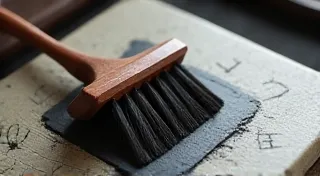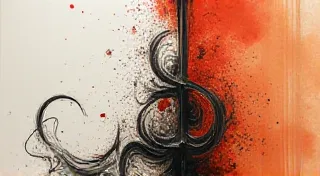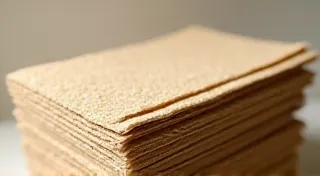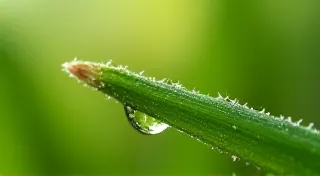Capturing the Spirit of a Single Plum Blossom in Sumie
The Japanese plum blossom (ume) holds a profound significance in Japanese culture. It symbolizes perseverance, hope, and beauty emerging even in harsh conditions, as it blooms amidst the winter chill. In Sumie painting, capturing this essence goes beyond mere representation; it’s about conveying the spirit of the flower.
Understanding the Significance of the Ume
Before we even touch the brush, it’s essential to appreciate the cultural weight of the plum blossom. It’s a symbol of renewal, a reminder that even after the darkness of winter, beauty and life will return. This understanding informs our approach to painting – it’s not just about recreating a flower, but about embodying these qualities on the page.
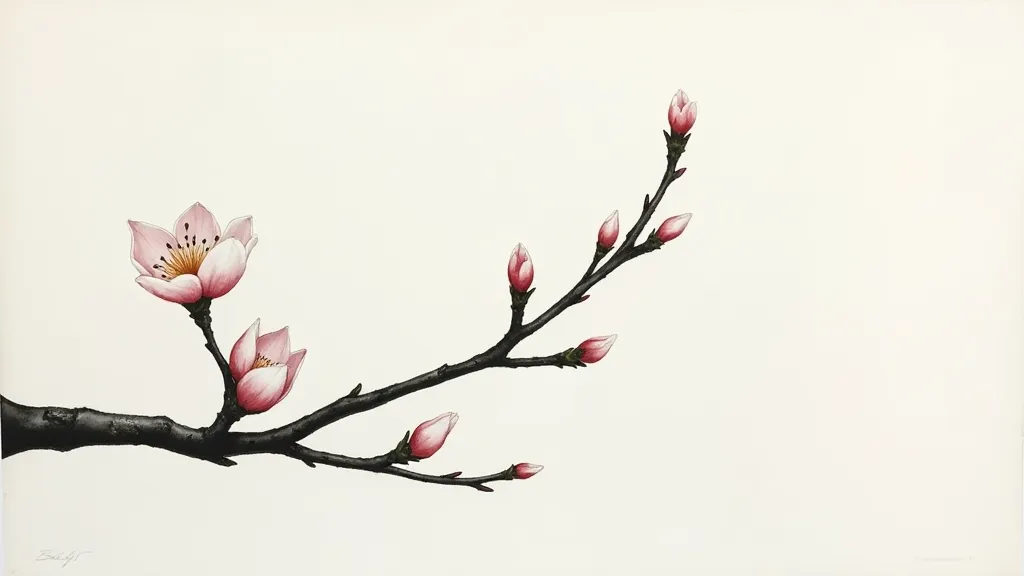
Materials You'll Need
- Ink Stone: For grinding your sumi ink.
- Sumi Ink: Choose a good quality ink stick.
- Water: Clean, cool water is essential.
- Japanese Brush (Fude): A medium-sized brush is suitable for this exercise. A round brush (Maru Fude) is a good starting point.
- Washi Paper: Traditional Japanese paper that is absorbent and allows ink to bleed beautifully.
- Paper Towels or Cloth: For blotting excess ink.
Step-by-Step Guide: Painting the Ume
- Preparing the Ink: Grind the sumi ink on your ink stone, adding water gradually until you achieve a dark, flowing ink. The consistency is important; it shouldn’t be too watery nor too thick. Practice on scrap paper to get a feel for the ink flow.
- Sketching the Outline (Optional): While Sumie emphasizes spontaneity, a very light outline with a diluted ink can guide your brushstrokes. Focus on the graceful curve of the branch and the delicate form of the blossoms. Don't press hard; this is just a guideline.
- The Branch: Begin with the branch. Use varying pressure to create thicker and thinner lines, suggesting depth and movement. A single, elegant curve is often more powerful than a perfectly straight line. Let the ink bleed naturally; don't try to control it completely.
- The Blossoms: The plum blossom’s shape is crucial. It’s not a perfect round; it has subtle curves and irregularities. Start with a light wash of ink, allowing it to bleed and diffuse. Add darker tones for shadows and definition. Observe real plum blossoms for reference; paying attention to how the light falls on the petals.
- Adding Buds: Include a few closed buds to add visual interest and symbolize potential. They can be painted with a simpler, less detailed approach.
- Negative Space: Don’t fill the entire paper. The negative space around the plum blossom is just as important as the flower itself. It allows the eye to rest and enhances the overall composition.
- Final Touches: Step back and assess your painting. Add subtle details where needed, but avoid overworking it. The beauty of Sumie lies in its simplicity and spontaneity.

Embracing Imperfection
Remember, Sumie is about embracing imperfection. Don't strive for perfect replication. Let the ink flow, allow for spontaneous brushstrokes, and learn from your mistakes. Each stroke tells a story, and the beauty lies in the unique character of your painting. Focus on capturing the spirit of the ume – its resilience, its elegance, and its unwavering promise of renewal.
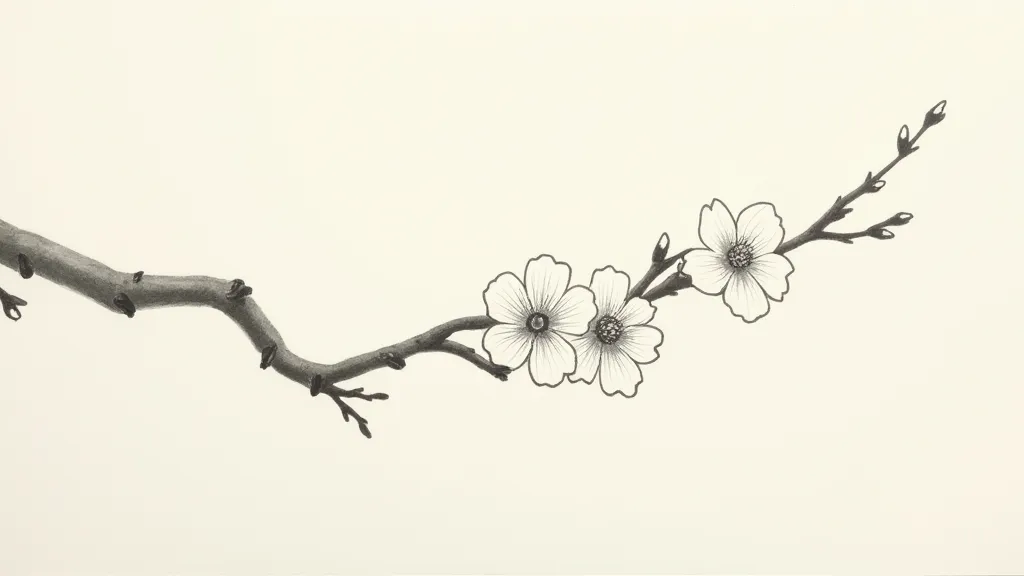
Further Practice
Once you're comfortable with this basic exercise, try:
- Painting a grouping of plum blossoms instead of a single branch.
- Experimenting with different brush sizes and ink dilutions.
- Observing and painting real plum blossoms to improve your understanding of their form and structure.
